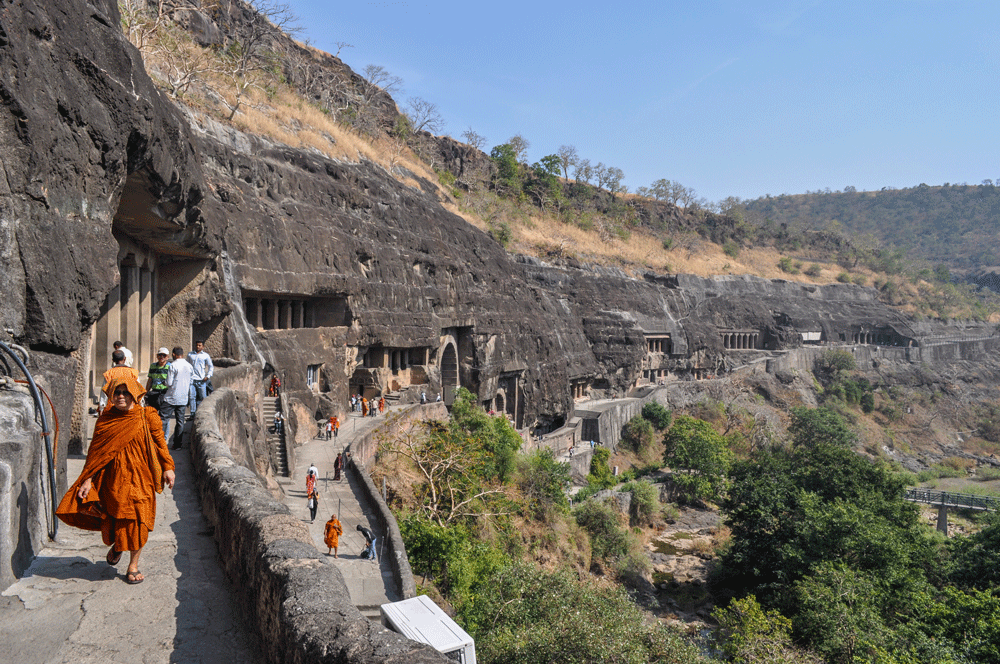Ajanta Caves – A Timeless Legacy
Hidden amidst the remote hills of Maharashtra, India, the Ajanta Caves are not only an architectural marvel but also a vivid testament to art and religion from over 2,000 years ago. Initially carved as a retreat for Buddhist monks, Ajanta has survived the test of time and obscurity to emerge as one of the most significant cultural heritages in the world.

The History of the Ajanta Caves
An Ancient Architectural Masterpiece
The Ajanta Caves consist of 30 rock-cut monuments carved into basalt cliffs along the U-shaped gorge of the Waghora River. They are categorized into two major phases:
- The Early Phase (2nd Century BCE): These caves primarily served as spaces for worship and meditation, with simpler architecture.
- The Later Phase (5th-6th Century CE): These caves are more elaborately decorated with vibrant frescoes and intricate sculptures, reflecting the pinnacle of Indian Buddhist art.
The Mysterious Abandonment
Around the 7th century, as Buddhism declined in India, the caves were abandoned and fell into obscurity. Over centuries, nature enveloped the site with dense forests, erasing it from historical memory.

Accidental Discovery and Historical Revival
In 1819, during a tiger hunting expedition, British officer John Smith accidentally stumbled upon the entrance to the Ajanta Caves. The sight of the frescoes and sculptures, though faded by time and nature, left Smith and his team awestruck. Since then, Ajanta has been rediscovered, restored, and studied, becoming an archaeological treasure for the world.
Artistic Analysis and Cultural Significance
Frescoes – Visual Storybooks of the Past
The frescoes in the Ajanta Caves are not just artistic masterpieces but also narrative tools. They depict the Jataka tales (stories of the Buddha’s past lives), offering a glimpse into ancient Indian life, culture, and spirituality. Notable features of the frescoes include:
- Realistic Style: The characters are portrayed with expressive and emotive features.
- Durable Colors: The colors, derived from natural minerals, have remarkably endured the test of time.
Sculptures – A Fusion of Art and Devotion
The sculptures of Buddha at Ajanta represent meditative, teaching, and nirvana postures. Intricate carvings on columns, doorways, and ceilings showcase the exceptional craftsmanship and devotion of the ancient artisans.

Ajanta – A UNESCO Treasure
In 1983, the Ajanta Caves were designated as a UNESCO World Heritage Site, celebrated not only for their historical significance but also for their global impact on art and religion. They stand as a confluence of Buddhist philosophy, creative expression, and unparalleled technical skill.
Conclusion: A Journey Through Humanity’s Heritage
The Ajanta Caves are more than architectural achievements; they symbolize the intersection of art, religion, and history. From being forgotten to being revered, Ajanta reminds us of humanity’s infinite creativity and the enduring value of cultural heritage. A visit to Ajanta is not just a journey to the past but also a reflection on how culture shapes our future.
